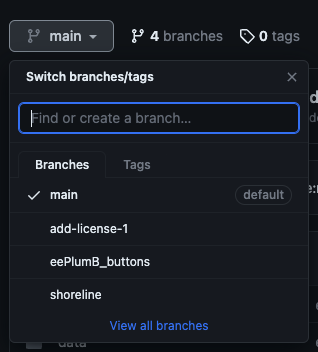Section 6 Git Hub Feature Branches
6.1 When to work in a feature branch
Working in feature branches is similar to working in a forked repository, except you have two parallel workflows with varying commit history in the same [forked] repository. It is essential, if you are using branches, that you are working on a very specific issue or feature (hence the name) that is independent of others’ work on the repo – or even your other branches! IMPORTANT: Try not to leave your branches unmerged for long periods of time if other folks are working in the same repository to help alleviate merge conflicts.
Working in a feature branch is also a way to continue working on a codebase as other code is in review.
6.2 How to create a feature branch
Make sure the forked main (‘origin main’) is updated with upstream changes and all of your current work has been committed to the main branch, then start a new branch:
git checkout -b new-branch-name
Branch starts with a copy of the branch you were on. You can now make edits in
this branch and add/commit as usual. If you switch back to the main branch
using git checkout main, all of your commit history will revert to that on
the main branch (aka, it will look like all of your work disappeared).
You can either push your branch up to your origin remote (your forked repo) using:
git push -u origin new-branch-name
Or you can go back to your main branch and merge your edits from the feature branch:
git checkout main git merge new-branch-name
You can also submit a pull request from your feature branch the same way you would if you were making a pull request from your main branch. Just make sure you have selected the proper branch from your forked repo.

In general, we only have a single branch (‘main’) in use at our primary ROSSyndicate repository.